200HR GSPSS INTENSIVE Certified Yoga Teacher Training

- This event has passed.
200HR GSPSS INTENSIVE Certified Yoga Teacher Training
July 2, 2022 - July 11, 2022
****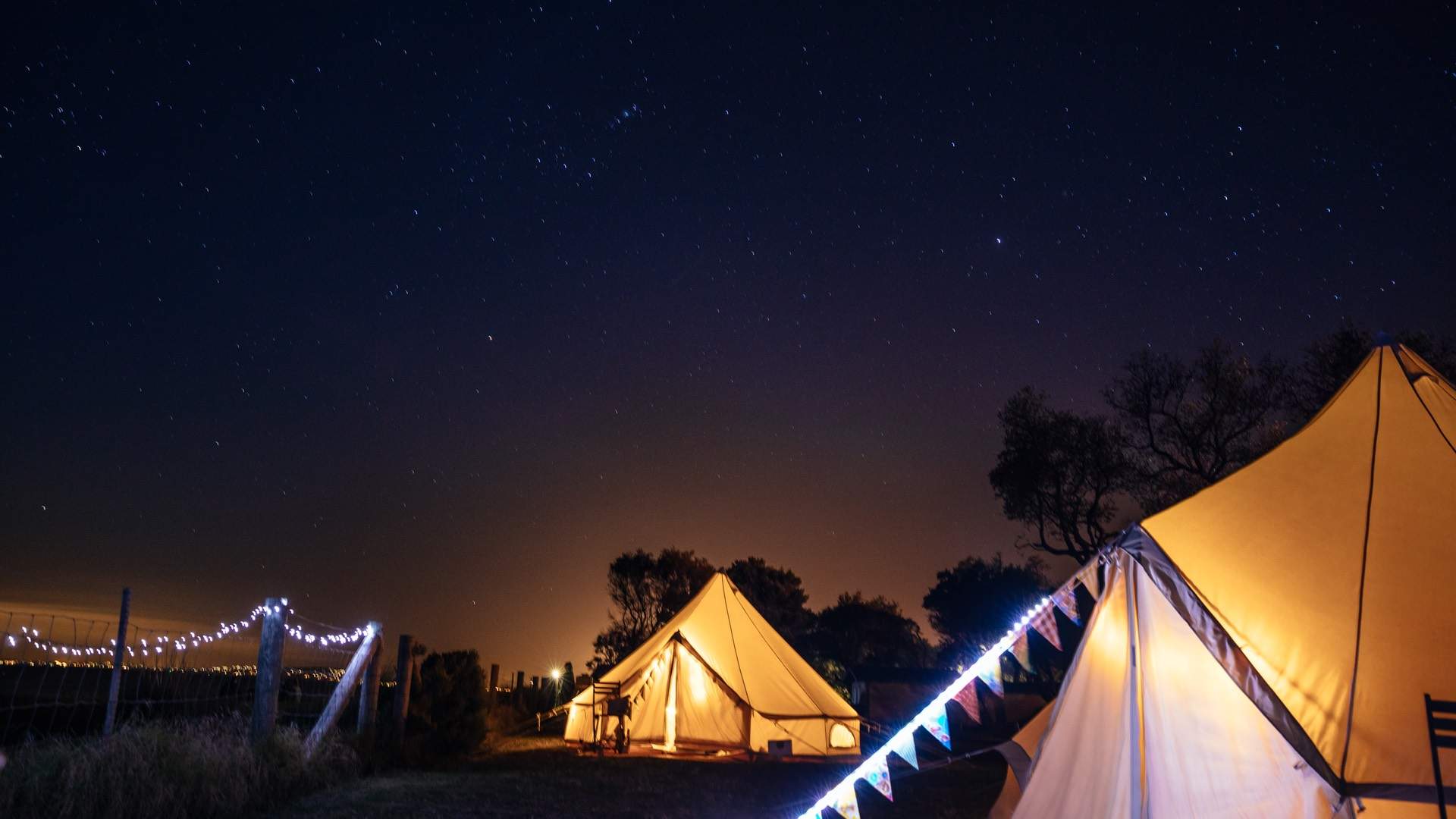
Bridging the gap between an interested, dedicated yoga student and an inspired, capable and confident new yoga teacher.
Embark on a true journey with a yoga teacher training in Lyndhurst, NSW Australia.
GSPSS Mahashakti happy Yoga in Lyndhurst, NSW is about waking up. Waking up to your true potential, and the life that you’ve been dreaming of in those quiet moments of reflection. We believe that the tools of yoga offer us a path toward that life. They give us the gentle discipline to focus the mind on what’s most important, to strengthen and nurture the physical body, and to align our energetic blueprint with the source. Our 200 HR YTT will set you on a path of shedding the layers of what’s holding you back, open you up a new way of being in addition to giving you an internationally recognized certification that will allow you to teach others what you’ve learned, almost anywhere in the world.
The “GSPSS Mahashakti Happy Yoga’ teacher training is uniquely rooted in the authentic Hatha yoga tradition. The 10 days, 200-hour, and total-immersion format is designed to take you deeper into your practice and intention to become a teacher.
Highlights
- 10 days of practice
- 3 yoga, 2 meditation, 2 Mudra, 2 mantra classes per day
- Daily guided meditation sessions
- Chanting, breathwork, and mudra lessons
- Academic study and teaching practice
- 10 nights accommodation
- Daily veg/vegan meals
- Daily Karma Yoga
During the course, you will stay at Immanuel in a single room with a shared bathroom.
Certification
Students with a graduation certificate from a 200-hour foundation course or who have completed training with a Yoga Alliance Professionals-accredited trainer can apply for membership with Yoga Alliance Professionals. We are a fully registered YTT training school.
About the course
This course includes seven various sets of Hatha yoga from beginners to advance levels for physical, mental, emotional, and spiritual well-being. Further, you will first series of pranayamas of Gitananda tradition to prepare your pranic energy system, mind, nervous system, and chakras for further advanced practices. You will follow a set of mantras and bhajans as part of your mind and chakra purification and awakening.
You will also study the history and meaning of yoga followed by a study of Ashtanga or Raja yoga, Pancha kosha, nadis, chakras, and key yogic concepts. This course takes three weeks of residential yoga sadhana, learning, and practice at the ashram, and you will have excess to the online audio-video course materials for six months.
Objective
To enable yoga teacher trainees to be able to teach Sanatan yoga classes and workshops as well as design Hatha yoga Sadhana routines. Understanding classical roots and principles of yoga, Ashtanga yoga – eight limbs of yoga, Pancha-kosha, and chakras.
Is this course for you?
If you are looking to teach classical or authentic Hatha yoga and learn the philosophy, ideas, and principles behind yogic practices and philosophy, then yes, this yoga teacher training course is for you.
Outline
I. Hatha yoga
Seven sets of Hatha yoga include jattis, kriyas, asana, pranayama, mudra, and bandhas. Each of them will be practiced as a one-hour session and a 90-minute session.
- Hatha for beginners and general health – a simple and progressive lesson plan to introduce people to holistic Hatha yoga to gain general health and well-being
- Hatha yoga for breathing – hathenas to improve sectional breathing, enhance the quality of prana and energy, mind-emotion cleanse. Hathenas and Vedic Suriya Namaskar.
- Hatha yoga for flexibility, strength, and vitality. Chatus-Pada kriyas followed by Aruna, Vedic, and Rishikesha Suriya Namaskar
- Hatha yoga for balance, vitality, and harmony-Hatha yoga series to balance right-left, Loma-viloma, sun-moon energies to bring balance, and improve immunity (Aruna Suriya Namaskar extended two sets)
- Activation of pranic energies and channeling them for better health and well-being. Kshatriya Kriyas, Vajra-Veera, and Vajrasana supta
- Classical approach of Hatha yoga – static poses, bandhas, and mudras for physical, mental, emotional, and spiritual development
- Teaching skills or understanding the lesson planning (Lesson plans: 1. Self-healing – 2. Gentle work-out, energy balance, and vitality – 3. Advance Hatha yoga for prana-Apana union)
- Assessment – students led sessions
II. Applied yoga philosophy
1. Introduction and meaning of yoga in various contexts
Yoga has so many meanings and definitions as it depends on what you are seeking out of yoga. It can be seen as a tool to keep fit physically. Others can see it as a tool to relax, stay calm, or concentrate and meditate. In this chapter, you will explore various meanings and definitions of yoga in various contexts and scriptures.
2. Yoga in ancient and modern times
Yoga has evolved and transformed. Yoga used to be for a few of those seeking enlightenment in ancient India where the guru will look for a disciple who is qualified to learn yoga. While in modern times, yoga is easily available and accessible to everyone. Yoga has also devolved in modern times many are using the term “yoga” as a fashion and brand to teach all the keep fit exercises. In this section, you will explore how yoga has transformed from ancient to modern times.
3. Raja yoga or Ashtanga yoga
Raja yoga or Ashtanga yoga is the highest form of yoga as a path with tools to deal with your physical, mental, emotional, spiritual, and karmic issues and various states as you grow and evolve. In this chapter, you aim to understand the steps of Raja yoga as a life path.
4. The many paths of yoga
Yoga has many paths, approaches, and tools like jnanas (wisdom), dhyana (meditation), karma (action), bhakti (devotion), etc. In this chapter, you will try to explore these overlapping paths and practices in yoga.
5. Obstacles in Sadhana and tools to deal with them
6. Key yoga scriptures
In this section, you will study the history, roots, key ideas, and practices of key yoga scriptures – Yoga Sutras of Patanjali, Bhagavat Gita, Gheranda Samhita, Hatha Yoga Pradipika, Shiva Samhita, Yoga Vashistha, and Vijnana Bhairava Tantra.
7. Pancha Yamas and Niyamas
In this chapter, you will discuss basic moral and ethical discipline and understand their practical importance in overcoming the animal behavior problems driven by desires and emotions.
8. Pancha Yamas
You will go into further detail to understand Ahimsa (non-violence), Satya (truth), Asteya (non-stealing), Brahmacharya (energy discipline), and Aparigraha (non-greed).
9. Pancha Niyamas
Niyamas are the code of conduct on how to live as a good human being and evolve on the authentic yoga path. In this chapter, you aim to understand the universal concepts of the first two niyamas – Saucha (cleansing) and Samtosha (contentment).
10. Asana
Asana is the third limb and a very well explored and known in modern yoga. In this chapter, you will look into asana and its meaning in various contexts and its importance and benefits in modern times.
11. Asana and Pancha Kosha
In this chapter, you will explore five body concepts of yoga in comparison to one body concept of modern science and understand yoga in holistic health and well-being.
12. The key concept of Hatha yoga
In this section, you will explore key concepts of Hatha yoga like Ha-Tha, Loma-Viloma, Shiva-Shakti, Prana-Apana, Spanda-Nispada, Adhi-Vyadhi, Nadis, and Chakras, etc.
13. Pancha Prana, Naris, and Kundalini
Prana is the subtlest form of cosmic energy, which is all-pervading and all-sustaining. The whole universe evolves from this pranic energy. This energy evolves in various forms to sustain various activities in and around you. In this chapter, you explore the concept of Pancha prana and the importance of its understanding in day-to-day life.
14. Pranayama
The science of the vital energy or force that gives you life and vitality. Pranayamas are practiced through breathwork, but the breathwork is not the aim. It is to control your prana.
15. Yoga as a holistic life – Health and happiness through yogic living
In this closing chapter, you will aim to study and understand the importance and value of yoga as holistic living and explore how yoga can be applied in day-to-day events. By accepting yoga as a lifestyle choice, you can see how naturally a healthy and happy life will come about. This chapter will also cover rebirth and reincarnation to explore the concept of life as an eternal divine blessing to be free from fear of death and letting go.
16. Samskaras, Karma, and evolution
Samaskaras are deeply ingrained behavior patterns. Karma is your action on the physical, mental, emotional, and spiritual levels. In this chapter, you try to explore and understand concepts of Karma and choices you make leading you into many unconscious karmas and Samskaras.
17. Pratyahara, meaning, and importance
Pratyahara is the fifth limb of Raja yoga, which means sensory withdrawal. In this chapter, you study about senses in modern and ancient concepts of yoga and Upanishads and explore the ways to discipline them.
18. Tantra and Hatha concepts of union and evolution
Ha-Tha, Loma-viloma, or masculine-feminine concepts yoga and exploring ways of their union in aid to evolution. You study concepts of Tantra as energy balancing concepts of right and left (male and female) energies in yourself as individuals to become who you are.
19. Dharana or concentration
Patanjali says that concentration is the ability of the mind. In this chapter, you study the sixth limb of Ashtanga yoga and explore various tools and practices.
20. Contemplation and cultivating your thoughts or learning how to think
Your mind manifests or echoes through your body and vice versa. In this chapter, you explore the importance and process of thinking, contemplation, and their influences.
21. Dhyana and Samadhi
These are the seventh and eighth limbs of Raja yoga means meditation and enlightenment. In this chapter, you continue from concentration or Dharana and explore further deeper.
III. Pranayama
1. Savitri rhythm and Sukha Purvaka pranayama
Solar rhythm and easy but rhythmic breathing is a nice and gentle way to introduce into pranayama practices. These are to help balance and activate your energies and harmonize your body, mind, and emotions together.
2. Suriya and Chandra Nari pranayama
Sun and moon nostril breathing are to help activate the right and left sides of the brain and find harmony in your day-to-day life.
3. Vibhaga pranayama
Sectional breathing.
4. Pranava pranayama
Pranava AUM pranayama is a beautiful way to activate all three sections of your lungs and recharge your vital organs.
5. Bhastrikas
Nine cleansing breathing techniques to get rid of negative energies on every level.
6. Sukha pranayamas with Pratyahara and Dharna concept
7. Anushka pranayama for cleansing nostrils and sinuses
8. Bhramari
Bhramara pranayama for brain-nervous system activation and recharging.
IV. Yoga anatomy and physiology
1. General anatomical terms, cells, tissues, organs, systems, and yoga: two hours
2. Skeletal system and yoga: two hours
3. Muscles and yoga: two hours
4. Key body systems and yoga: two hours
5. Contraindications, yoga adjustments, and key issues: two hours
6. Respiration and Hatha yoga: two hours
7. Backbone, spine, and yoga: two hours
…………………………………………………….
A typical day
- 06:00 – 06:30 Quiet sitting or meditation
- 06:30 – 08:00 Arati followed with gentle Hatha yoga/detox
- 08:00 – 09:00 Breakfast
- 09:00 – 10:00 Karma yoga
- 10:00 – 11:00 Physical yoga/Asana
- 11:00 – 12:00 Midday pranayama/Mudras – the yoga of gesture
- 12:00 – 13:30 Lunch
- 13:30 – 16:00 Free time or study time
- 16:00-16:30 yoga Nindra/Meditation
- 16:30 – 17:30 Teaching methodology or philosophy/Sanskrit/public yoga
- 17:30 – 18:00 Karma yoga
- 18:00-18:30 Dinner
- 18:30 – 20:00 Kirtan /music
- 20:00-20:30 evening meditation
- 20:30 retire/noble silence
Location
2 Mount Mcdonald St, Lyndhurst NSW 2797
Contact/Booking
bhimsensap@gmail.com, +61434570379 ,www.gspss.org.au
Venue
Geographical Features:
‘Emmanuel’, Circ 1896, GSPSS Yoga Ahram, is an all-inclusive, academically & medically -suitable spiritual retreat center located in beautiful countryside. To visit this ‘Emmanuel’, Circ 1896 -is once in a Lifetime Opportunity. Located 15mins Blayney, 30mins Cowra, just over 45mins from Bathurst & Orange, & 3hrs to Sydney. This holy hermitage is run by THE GLOBAL SOCIETY FOR PEACE AND SPIRITUAL SCIENCE INCORPORATED (GSPSS),a non for profit organization, which is an international common forum of peace lovers and humanitarian activists.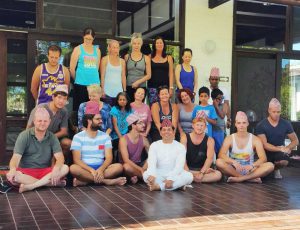
The gardens enjoy established shade trees and charming gardens, whilst being very private. The healing space for plant medicine ceremonies, breathwork, meditation, worship, prayers, Well-being retreat, weekend escape, and yoga. Health club, massages, mud baths, hot & cold baths. Enjoy, Established tree-lined, private garden. Built-in 1896.
10 minutes away from the Historic Carcoar Dam (Manasarobara Lake )
Carcoar Dam is a popular inland sport and recreation destination in Central West NSW, offering year-round attractions for water sports and fishing enthusiasts, nature lovers, campers and picnickers. Free camping is available on the lake foreshores. The main purpose of the dam is to supply irrigation, stock and household needs in the Belubula Valley. The dam features an unusual thin concrete wall that is curved from side to side and also from top to bottom in a double parabolic arch.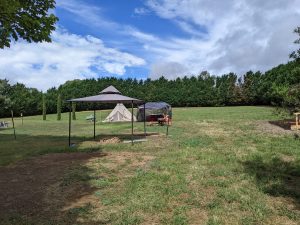
25 minutes to Wyangala Dam (Gosai Kunda)
Wyangala Dam ! is a major gated rock fill with clay core embankment and gravity dam with eight radial gates and a concrete chute spillway across the Lachlan River, located in the south-western slopes region of New South Wales, Australia. The dam’s purpose includes flood mitigation, hydro-power, irrigation, water supply and conservation. The impounded reservoir is called Lake Wyangala.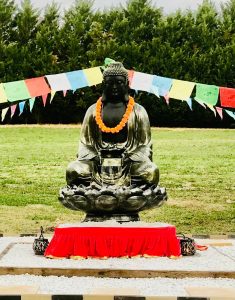
The Historic village (The Pashupati Baudha Dham)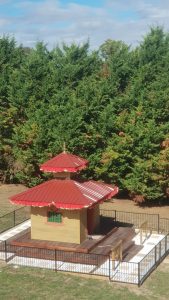
With a population of about 250 locals, Lyndhurst residents enjoy the tranquillity of country life with cultural and recreational activities on its doorstep. Home to the oldest rifle club established in 1913 Lyndhurst Rifle Club, which hosts teams of rifle experts with accolades from around the World. The Public School remains a center of activities for families. The Royal Hotel is the hub of the village and the Lyndhurst Take Away serves some of the best food and coffee around. The Autoport is conveniently located for fuel and supplies and Lyndhurst Soldiers. Memorial Hall is a community meeting place.
History of the town 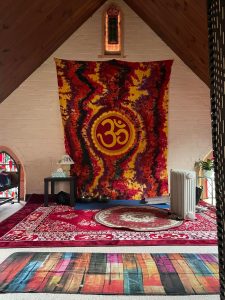
First established in 1861 and later proclaimed a village in 1885, Lyndhurst is rich in history. Famous for the discovery of gold at Junction Reefs which created Lyndhurst as the hub of services to the people in the goldfields. The town prospered during the late 1800s and at one stage boasted three banks, three general stores, a cinema, pubs, a professional photographer, a farrier, a baker, a fruit shop, three garages, a wheelwright, a tank building, a railway station, a memorial hall, and showground. 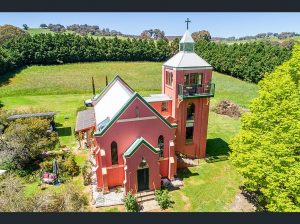
SURROUNDING AREA
~ Visit the neighboring historic villages of Mandurama, Neville, and Carcoar. Visit the Japanese Gardens, POW camp and memorial, and restaurants in Cowra 43 kilometers down the highway.
~ Travel to Canowindra 49 kilometers away to see the beautiful, bright yellow canola fields, go ballooning, discover the fossils at the Age of
Fishes Museum.
~ Take the boat, have a picnic or go for swimming at one of the scenic dams in the area including Carcoar Dam and wind farm a short 17 kilometers drive or Wyangala Dam just 44 kilometers.
~ Take an easy 53-kilometer drive for a day trip to the enchanting Abercrombie Caves.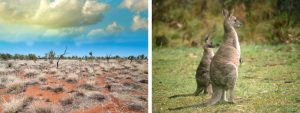
Our Lead Trainer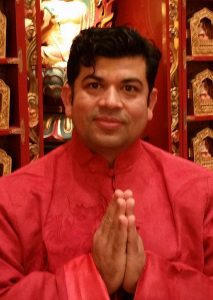
ERYT designation is Master Yoga Teacher (MYT) Yogi Acharya Rajan Sharma AKA Bhimsen Sapkota and Yoga Alliance-International’s Registry ID: ABS24102020 and Accredited yoga teachers team.
Acharya Rajan Sharma (Bhimsen Sapkota) is an inspirational yogi & a human values promoter. Specializing in transformational experience of yoga, meditation, mantra, natural therapy, and discourse.
Yogi Acharya Rajan Sharma is an author of the bestselling book-‘The Art of Happiness(Sukha Sutra), a Professor, Peace Promoter, Yoga -meditation promoter, Lifestyle Coach, Motivational Speaker & Media Personality with 27 years of authentic yoga teaching experience in 400 different cities of 82 countries around the world.
He is a founder & the authentic yoga course designer of ‘The Global Society for Peace and Spiritual Science(GSPSS), Prof. Victoria University, Principal Australian College of Yoga & Natural Therapy goodwill ambassador for the International Nepalese Literary Society(INLS) , and peace ambassadors for WPC & GSPSS which are special consultative status with the UN.
Acharya Rajan Sharma is also known as Bhimsen Sapkota. He is a name among millions who struggled, failed, and surged ahead in search of success, happiness, and contentment. He is based in Australia and spreading happiness in many countries. All he had was an undying learning attitude to hold on to. Rowing through ups and downs, it was time that taught him the true meaning of his life. He has got yoga degrees from 3 different countries i.e. Nepal, India, and Australia.
World’s record holder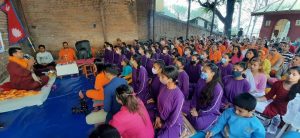
Yogi Acharya Rajan Sharma has set 3 different world records:
1)Yoga Camp and Motivational seminar inside the flight, USA-2017,
2) Longest ever yoga teachers training of continuously 5o days online, among 600 participants around the world-2020.
3) Organiser of 600 yoga teachers, who participated at the same time via online yoga test -2020, 
Feedback from the trained yogis!
